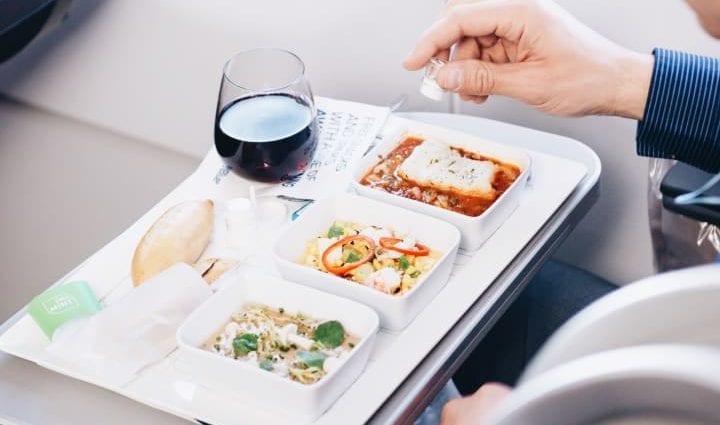Food on airplanes is discussed and compared more often than the skills of pilots: someone likes it, and someone scolds it for its rubbery taste and small portions. How is the menu for flights made, who prepares food, what the pilot eats, and what was the filling of the cassettes several decades ago.
The history of food on airplanes
Of course, high altitude food could not have appeared with the first airplanes, in which any sandwich was scattered to pieces, so imperfect machines were shaking. And the flights themselves were small, since there was not enough fuel to conquer long distances. And there was no need for food, as a last resort you could refresh yourself at refueling or during a change of transport.
In the 30s, a large and powerful Boeing 307 Stratoliner was created. With a warm and comfortable cabin, a quieter engine and more soundproofing for passengers, toilets on board and folding berths for first class passengers. The flight acquired the outlines of comfort, was longer in time, and it became necessary to feed passengers and attract them to their side from the airlines. There was a kitchen on board the Boeing, and the passengers were served fried chicken. And cigarettes for smokers to relieve stress – still, many people are still afraid of flying.
In the 40s, flying on an airplane was no longer a struggle for survival, people began to get used to this type of transport, and food on board became more and more diverse. Moreover, most people seize stress, distract from thoughts about altitude with the help of delicious dishes. The high competition of airlines added fuel to the fire, and food became a lever of pressure on customers – fly with us and eat better!
In the 70s, the US government released pricing on free flight and allowed to set their own prices for flight services. Of course, airlines began to fight for each passenger, reducing the cost of tickets to the maximum. And saving on delicious and varied food was not long in coming – do not spend a lot of money on a flight, but you can eat deliciously at home.
Today, short flights in economy class have to go through on an empty stomach, VIP passengers have the opportunity to have a snack. Long-haul flights continue to provide food for aircraft passengers.
Why plane food isn’t tasty
Specialized companies that prepare and pack food for airlines know how a person perceives food at altitude in a completely different way. Having risen above 3 km from the ground, our receptors lose their sensitivity, and the usual habitual food suddenly seems insipid and disgusting in taste. If you grab food from an airplane and try to finish it on the ground, it may show you salty or too sweet.
So that there is no trouble
Airplane passengers and crew, in particular pilots, eat different foods. For pilots, a special menu is drawn up, monitored so that their meals are varied and safe. For each pilot, a cassette of food is signed so that in case of poisoning, they know which food provoked a worsening of the condition. And since the co-pilot eats a different set of food on this flight, he can take control of the helm and land the plane without threatening the lives of people on board.
What do they eat on the plane
Onboard catering is responsible for preparing meals on board. Blanks, frozen portioned meals, are made on the ground and delivered on board by special transport.
Food on the plane depends on the season, vegetables and fish predominate in summer, while in winter meals are hearty and warming – side dishes and meat. The duration of the flight also plays a role – a set lunch is provided for long distances, and a small snack for short ones. The food depends on the class of service and the budget of the airline. Special meals can be ordered if provided, such as a children’s meal or a diet meal, for national, religious reasons.
Is it possible with me
What can I take on board if meals are not provided on the plane or purchased separately?
You can take with you fruits and vegetables, cookies, waffles, pastries, chips, bread, chocolate, sweets, dried fruits, nuts, salads in containers, sandwiches with cheese and meat. Yoghurts, jellies, canned food, kefir are considered liquid and it is worth knowing in advance which of these products you can carry with you in your hand luggage. For the child, you can take baby food.
Do not take food with you, which can spoil, which can be the cause of the illness, which has an unpleasant specific smell.










